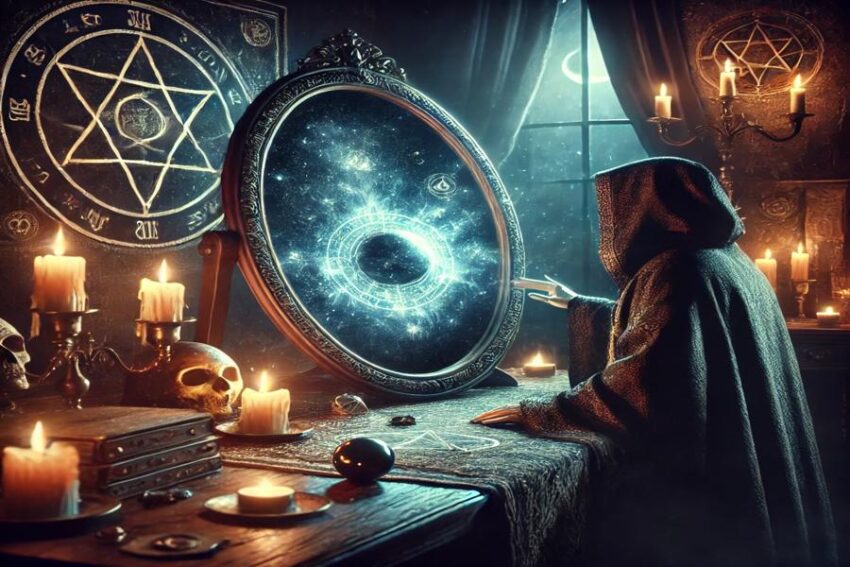Definition
Scrying is an ancient practice of seeking visions or insight by focusing on a reflective surface or medium such as water, mirrors, crystals, or flames. This method has been used for divination, meditation, and spiritual guidance, often involving symbolic interpretations of images or impressions that arise.
Table of Contents
Origins and History
Scrying dates back thousands of years and has been practiced in various cultures worldwide. Ancient Egyptians and Mesopotamians used polished obsidian and bowls of water for spiritual communication. In Greece, oracles such as the Oracle of Delphi were thought to engage in scrying-like practices to interpret messages from the gods. During the Middle Ages, European mystics popularized crystal balls and scrying mirrors, particularly black obsidian, for fortune-telling. Indigenous cultures also used reflective surfaces like water and fire for guidance and foresight, highlighting the universality of scrying.
How Scrying Works
Practicing scrying involves entering a meditative state and focusing on a medium to induce visions or impressions. Popular scrying tools include:
- Scrying Mirrors: Often crafted from black obsidian or darkened glass, these mirrors are used to reflect the subconscious mind and hidden truths.
- Water: Bowls of still or flowing water are symbolic of emotional depth and intuition.
- Crystal Balls: Clear quartz is the most common material, thought to amplify psychic energies.
- Flames: Candles or open fires are used for their flickering patterns, symbolizing transformation and spiritual awakening.
The practitioner clears their mind, gazes into the medium, and allows impressions or images to emerge. These are then interpreted based on the tool used, the individual’s intuition, and the question at hand.
Symbolism and Interpretation
Each medium used in scrying carries symbolic associations. Scrying mirrors are believed to reveal deeper truths and connect the practitioner to otherworldly realms. Water represents fluidity and emotional insight, while flames symbolize renewal and clarity. The reflective nature of scrying allows practitioners to interpret the images or feelings that surface as messages from spiritual or subconscious sources.
Famous Practitioners
Scrying has a storied history with renowned figures who practiced it. Nostradamus, the French seer, reportedly used a bowl of water for his prophetic visions. Dr. John Dee, a prominent 16th-century mathematician and mystic, used a black obsidian scrying mirror to communicate with angelic entities. These figures helped scrying’s reputation as a powerful divination method.
Modern Use
Scrying remains popular today among spiritual practitioners, psychics, and seekers of personal insight. Tools like scrying mirrors are commonly used for self-reflection, divination, and meditation. Workshops and online resources teach scrying techniques, blending traditional methods with modern spiritual practices. Despite its ancient origins, scrying continues to captivate those drawn to the mystical.
Skepticism and Scientific View
Critics argue that scrying results are often due to psychological phenomena, such as pareidolia (seeing patterns in random stimuli) or self-suggestion during a meditative state. While skeptics dismiss its supernatural aspects, practitioners value scrying for its ability to access deeper intuition and foster a sense of connection with the spiritual.
Conclusion
Scrying mirrors and other tools provide a timeless bridge to explore the unseen realms of intuition and spirituality. Whether regarded as an ancient art or a psychological tool, scrying continues to inspire seekers with its mysterious and symbolic nature.
